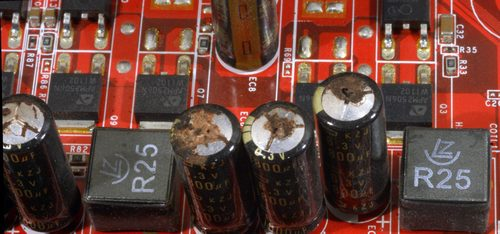A reprint from the PC410 Security Newsletter:

Lately, I’ve been asked why some old good stuff doesn’t work anymore. Usually, that’s for software, printers, and scanners. Basically, it’s because old tech doesn’t understand how to talk to new tech, and new tech has no drivers, or translators, for old tech.
While you can use any one device forever, in offline isolation, or as long as it lasts on its own, when you combine it with other technology, especially printers or the Internet, compatibility issues start showing up when it’s too different in age from the other systems in use. This works as long as nothing breaks. Replacing whatever died starts a mismatch of old and new, and the work to keep it all going surges badly.
My basic rule is to try to have all the technology in an office be of a similar age, preferably with a 4-year range. That’s generally reliable. Beyond that, the savings in not buying new hardware or software are gradually overwhelmed by additional configuration expenses.
But How Old is Old?
For computers, the rule used to be, according to Microsoft and Intel, that a computer is due for replacement after three years. As both those companies wanted to sell more products, their opinions include a lot of bias. What I’ve seen over the years is that desktop computers that are kept off the floor, had no basic defects, and have an annual internal de-dusting, become useless from a lack of compatibility with new software long before they actually stop working from hardware issues. Basic defects can make a big difference on some groups of computers, like the bad lead-free solder and leaky capacitors that killed off nearly every 2003 computer.

And better computers last longer, but not always because they’re better. Dell’s low-end home computers have exactly the number of internal connectors they need, plus one spare power connection. Need to add another drive? The power supply isn’t powerful enough for that. Need to add a USB 3 card? No, there isn’t a connector to power that, or an open slot to install it in. The same upgrades in their more-expensive business products are routine.
Notebooks add handling to the age question. The cheaper ultra-light notebooks are frequently all plastic, impossible to upgrade (obsolete sooner), and more fragile. Sturdier notebooks, like a Lenovo ThinkPad, have metal hinges and corner reinforcements, and can survive a drop or a bad thump that would crack a plastic hinge. And inside, solid-state drives can survive bumps where a spinning hard drive would bounce the read/write head off the spindle and lose alignment. Again, the better computer will last longer.
Mismatches:
QuickBooks only supports the last three annual versions of their product. If you need payroll tables inside the product, or links to an industry-specific company management product, plan to upgrade at least that often. If not, you can wait until your version of QuickBooks won’t install in your new version of Windows; new versions of Windows are mostly supported by only the most-recent annual edition of QuickBooks.
Some old laser printers just won’t die. But they need parallel printer cables, not USB connections. While I can add a printer port to anything, there is no printer driver software for a printer of that age in Windows 10, so some ‘emulation’ driver will have to be used, because every printer can make believe that it is something truly generic. That was an ‘IBM Pro Printer’ 20 years ago, and ‘PCL 5’ now. Emulations work, but advanced features of those old printers won’t.
Specialty software, mostly industry-specific, is mostly a case of letting your software vendor control your office. They will release updates, and you’re either ready or not. The better vendors will warn you about big changes one month in advance, mostly, but they aren’t willing to spend their programmer hours on any version of Windows that is over 5 years old. That’s Windows Vista and older now, and will be Windows 7 in April of 2020, when the security patches from Microsoft stop.
Replacement Cycles:
Some computer shops suggest replacing every computer on a staggered schedule every three years, and only buying computers with 3-year on-site warranties. This saves those shops from ever opening a computer or going on-site. While it’s a sure recipe for reducing down-time, here is a more cost-effective replacement cycle:
4 years for notebooks and small servers.
5 years for most information-worker computers.
3 years for power users (video editing, computer-assisted design/CAD).
7 seven years for non-critical desktop computers that aren’t in daily use.
Jerry Stern
Chief Technology Officer, PC410.com